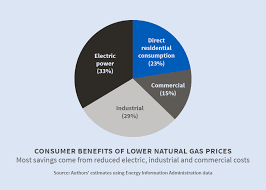Gas and electricity are fundamental to modern life, powering our homes, industries, and technological advancements. Understanding the economics of these energy sources, including their costs and pricing mechanisms, is crucial for consumers, businesses, and policymakers alike. In this article, we will explore the intricacies of the economics of gas and electricity, shedding light on the factors that influence their costs and pricing.
The Cost Components of Gas and Electricity
- Production Costs: The production costs of gas and electricity primarily depend on the energy source. For gas, it involves extraction, refining, and transportation. Electricity production costs are determined by the fuel source (e.g., coal, natural gas, renewable sources), equipment, and operational expenses.
- Infrastructure Costs: Gas and electricity require extensive infrastructure, including pipelines, power plants, and distribution networks. The construction, maintenance, and expansion of this infrastructure contribute significantly to costs.
- Environmental Costs: Environmental considerations are becoming increasingly important. The costs associated with mitigating emissions, complying with environmental regulations, and transitioning to cleaner energy sources impact both gas and electricity.
- Commodity Prices: Gas prices are influenced by the global supply and demand for natural gas, while electricity prices are affected by fuel prices, such as coal and natural gas. Commodity price fluctuations can lead to price volatility.
- Technology and Efficiency: Technological advancements can reduce production and distribution costs. Improvements in energy efficiency can also impact costs, especially for electricity.
- Regulatory and Policy Costs: Compliance with energy regulations and policies can be costly. These costs may include emissions reduction initiatives, renewable energy targets, and incentives for clean energy.
Pricing Mechanisms for Gas and Electricity
The pricing of gas and electricity is influenced by various factors:
- Supply and Demand: Prices for both gas and electricity are subject to the laws of supply and demand. High demand or low supply can lead to increased prices, and vice versa.
- Generation Costs: The cost of producing electricity significantly impacts pricing. For example, electricity generated from renewable sources often has a competitive advantage due to low operating costs.
- Distribution Costs: The costs associated with transporting gas and electricity from producers to consumers are included in pricing. These costs can vary based on location and infrastructure.
- Regulatory Oversight: Government agencies and regulatory bodies often set pricing guidelines for gas and electricity to ensure affordability and fairness. These regulations can impact pricing structures.
- Time-of-Use Pricing: Some regions implement time-of-use pricing, which charges different rates for electricity based on the time of day. This encourages consumers to shift their energy usage to off-peak hours.
- Renewable Energy Incentives: In many places, governments offer incentives for using renewable energy sources. These incentives can affect electricity pricing by making clean energy more competitive.
Challenges and Considerations
- Environmental Sustainability: Balancing economic considerations with the need for sustainable and environmentally friendly energy sources is a major challenge. Policymakers and businesses must navigate this delicate balance.
- Energy Security: Ensuring a reliable supply of gas and electricity is essential for economic stability. Diversifying energy sources can enhance energy security.
- Consumer Affordability: High energy prices can burden consumers and disproportionately affect low-income households. Ensuring energy affordability is a policy priority.
Conclusion
The economics of gas and electricity are multifaceted, influenced by production costs, infrastructure investments, environmental considerations, and regulatory policies. Pricing mechanisms are driven by supply and demand dynamics, generation and distribution costs, as well as regulatory oversight. Balancing economic concerns with sustainability and affordability is a challenge that policymakers, businesses, and consumers must collectively address. Understanding the economics of gas and electricity is vital for making informed decisions and shaping a more sustainable and affordable energy future.
